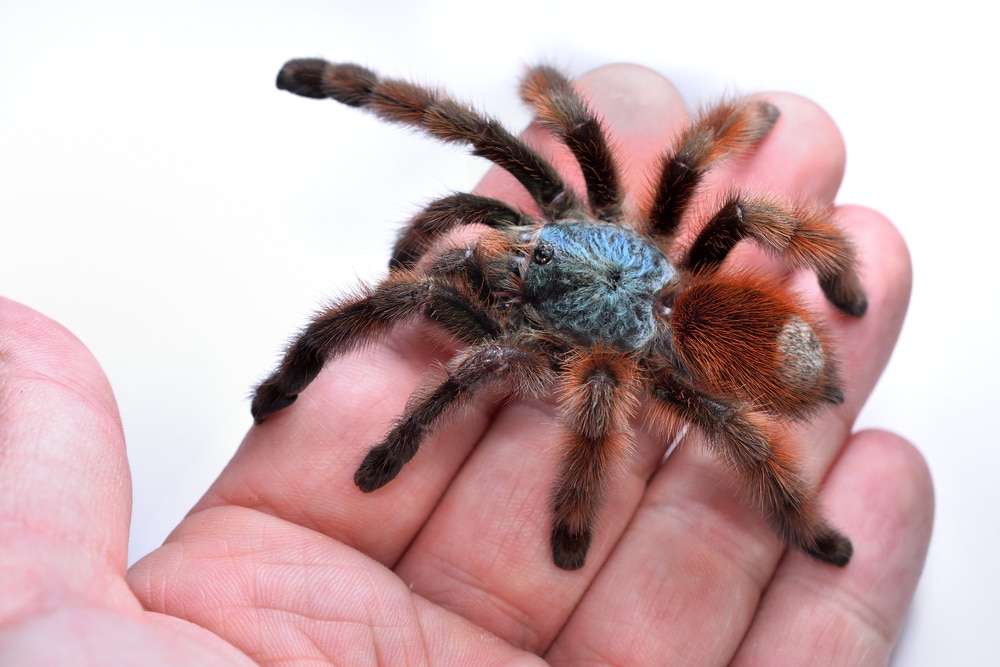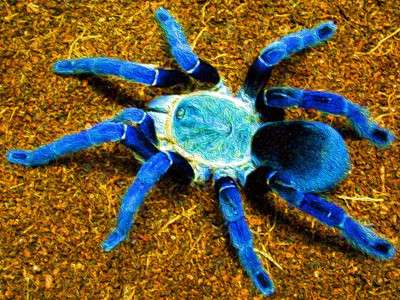
The most well-known tree spider is the Antilles Pinktoe Tarantula. It originates in Martinique, which is off the South American coast. It has a calm disposition and stunning adult colors, which make it very sought-after.
When tarantulas are young, they have a steel blue-black metallic hue that changes to a striking color as they age. Adults have an abdomen covered in red hairs and a metallic green carapace. The reds, pinks, and browns cover the long, furry legs. It is also frequently referred to as the Martinique Red Tree Spider, in keeping with both its spectacular adult color and its geographic origin.
Habitat
Off the coast of South America, in Martinique, are where you can find them. They are also referred to as Martinique Red Tree Spider, Antilles Pink-toed Tree Spider, and Antilles Pink-toed Tarantula.
The majority of spider species in the Americas belong to the genus Avicularia, which has about 20 different species. In addition, this genus was the first of the tarantula species to receive scientific description.
Description
- A medium-sized spider, the Antilles Pink-toed Tree Spider can grow to a height of 4 1/2 to 6″. (11- 15 cm).
- They have a metallic steel blue-black coloring as juveniles before transitioning to more striking hues as adults. Adults feature a metallic green carapace, a red-haired abdomen, and long, black, furry legs coated in crimson, pink, and brown hues.
- The males of most tarantula species are leaner and have lengthy, hairy legs. A growing female maintains her mass and becomes less spindly.

Feeding and Food
The Caribbean, aggressive feeder known as the pink toe spider. It will consume a wide range of insect species, notably flying insects like wax moths, mature crickets, grasshoppers, and roaches. In the wild, they will also eat small lizards like the Anolis species, but in captivity, they are not frequently offered vertebrate prey.
Reproduction
The first pair of legs of the male Martinique Red Tree Spider and Antilles Pink-toed Tree Spider have hooks. During courtship and mating, these hooks are utilized to wrestle with the female’s teeth.
After he has created a sperm web, an adult male should be cautiously put into the female’s enclosure. If the male is to be utilized for additional breeding efforts, he can be protected by a piece of cardboard or another object. The female should be fed more frequently and with a wider variety of prey items after mating. In order to properly rear the spiderlings, they will need close supervision and a setting with good ventilation and enough humidity.
Behavior
The pink-toed tarantulas of the Antilles live in trees. Despite their tendency to be bashful, they are incredibly swift and nimble. They will spend the most of their time spinning elaborate funnel-shaped webs in the bark of trees. They undergo molts as they outgrow their current skin, like all tarantulas do.
Condition to keep as pet
Keep the Antilles Pink-toed Tree Spider in a sizable container that faces vertically. They require a well-ventilated cage with a fair amount of humidity. The greatest solution is an aquarium that has been adapted with screens on the top and in some of the side panels. The spiders won’t thrive if the enclosure is too dry.
Table





